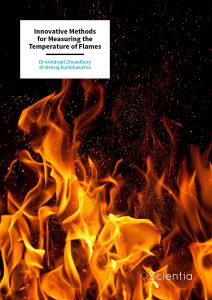Dr Arindrajit Chowdhury | Dr Neeraj Kumbhakarna – Innovative Methods for Measuring the Temperature of Flames
While it may seem a simple task, being able to accurately measure the temperature of fire has been of interest to scientists for many years. If accurate methods were readily available, it would allow individuals and businesses to have much greater control over combustion, improving how we use fuel and reducing carbon emissions. Dr Arindrajit Chowdhury and Dr Neeraj Kumbhakarna at the Indian Institute of Technology Bombay have been developing ideal methods for measuring the temperature of flames, and creating solutions to facilitate their widespread use.
The Importance of Pyrometry
The act of measuring the temperature at which flames burn, referred to as pyrometry, has been important to scientists for a long time. The ability to make such measurements has numerous benefits, ranging from improving energy efficiency and determining fuel quality, to having greater control over combustion for safety reasons. While pyrometry technologies are available to scientists and engineers, many are either inaccurate or prohibitively expensive.
One of more commonly used tools for measuring the temperature of flames is called a thermocouple. This is an electrical probe that can be inserted into a fire to give a temperature reading. However, thermocouples are plagued by a multitude of issues that make them difficult to use. Firstly, they measure specific points in the fire, meaning that they don’t always give a broad representation of the overall fire. Additionally, some flames can cause soot to build up on the thermocouple itself, leading to inaccurate measurements.
To circumvent this problem, optical techniques have shown promise. These allow the temperature of a flame to be measured from a distance. Such techniques are not only more accurate, but are also far safer in practice. The issue, however, is that these techniques often require expensive equipment that would usually only be found in a laboratory, making them less than ideal for general usage.
Dr Arindrajit Chowdhury and Dr Neeraj Kumbhakarna at the Indian Institute of Technology Bombay have been developing innovative solutions to make pyrometry far more accessible. Through their work, the researchers aim to help industries to burn fuels more efficiently, towards significantly reducing carbon dioxide emissions – the primary driver of global climate change.
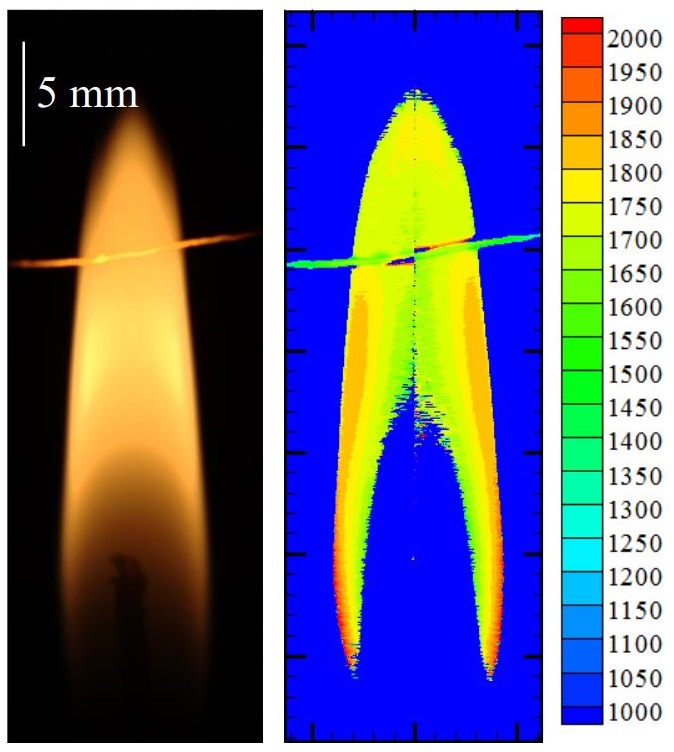
Temperature contours (in Kelvin) of a
typical candle flame obtained using the
team’s technique.
Adapting a Camera for Pyrometry
An ideal pyrometry technique would be non-invasive, safe and incorporate readily available components. Knowing this, Dr Chowdhury and Dr Kumbhakarna set out to find a solution that would fit these criteria.
The solution they came up with involved the use of a consumer-grade DSLR digital camera as their detector – the same kind used by many professional and amateur photographers. While other researchers had considered this possibility before, they had not been able to achieve adequate image quality for accurately measuring flame temperatures.
Dr Kumbhakarna and Dr Chowdhury set out to develop this idea into a working technique. After using the camera to obtain images of several flames, they ran the raw image files through a series of complex calculations in their own custom-built programs, which ultimately provided them with an accurate way to measure flame temperature.
They then tested their technique on a variety of different types of burning material. Not only did the team’s technique prove to work consistently for various materials, but it also could be used to obtain highly accurate measurements for sooty flames – which is difficult or impossible to achieve using other methods.
Through their technique, Dr Chowdhury and Dr Kumbhakarna have offered a low-cost solution for accurately measuring flame temperatures, allowing researchers and industries to perform their own measurements for a range of applications.
‘This technique could lead to unprecedented control over combustion processes, based on easy access to whole-field flame temperature data,’ explains Dr Chowdhury. ‘The combustion conditions can be tweaked to improve the efficiency of combustion in every combustor. That would mean that combustion for power generation, process industry, or even cooking in a rural setting, could be achieved by using a lesser quantity of fuel. Industries could service their equipment at the correct moment to cut back on excess fuel consumption. Such marginal savings across the world has the capability to save billions of tonnes of carbon dioxide from being released into the atmosphere.’
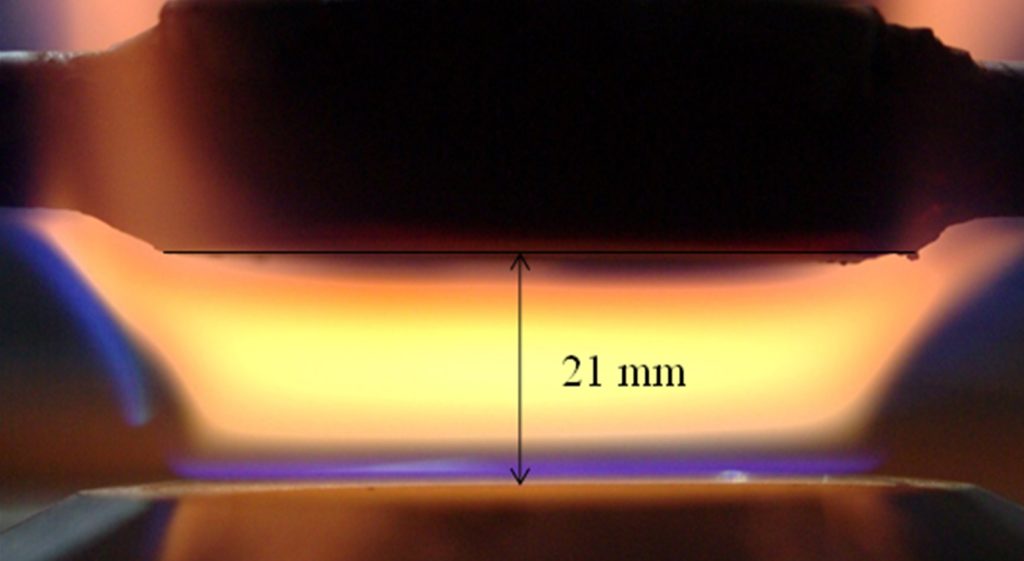
Measuring a burning mixture of ethylene fuel and air
Detecting Soot in Rocket Fuel
The existence of soot particles in flames can have a serious impact on the accuracy of pyrometry measurements, making it difficult to learn about how different fuels burn. This is particularly problematic in industries that require such crucial information for the development of new fuels.
One example is the development of new rocket propellants. An incredible amount of research goes into developing high-quality rocket fuels, and there is a lot to consider – including the amount of energy released from the fuel, the temperature of combustion and the waste products that it produces.
Dr Chowdhury and Dr Kumbhakarna decided to investigate a series of large molecules called bishomocubane (BHC) compounds. These have garnered significant interest recently due to their potential as rocket propellants. However, there is a lack of strong physical data regarding these compounds, especially when it comes to their combustion properties.
Using their DSLR camera setup, the team began to research the combustion properties of a selection of BHC fuels. During several experiments, they collected valuable combustion data for each type of fuel, showing that many of the fuels reached a maximum temperature of around 1700°C, which was supported by data gathered from a thermocouple.
Where the team’s DSLR technique really shone, however, was in the measurement of particularly sooty flames. Here, the recorded temperature was significantly higher than the reading from the thermocouple. The researchers were able to demonstrate that that the accuracy of their DSLR technique was far better than that of the thermocouple under these challenging conditions.
The team even managed to use the data that they gathered from the camera to calculate an estimate of the volume of soot that was contained within the flames themselves. This is an exciting development, as it provides even more insight into the properties of BHC fuels and their effectiveness as potential rocket propellants. This not only demonstrates the potential merits of the fuel, but of the team’s pyrometry technique itself.
Dr Chowdhury and Dr Kumbhakarna have demonstrated that by using an innovative approach, it is possible to accurately measure the temperature of a variety of flame types, using tools that are accessible to any research team or industry. It is hoped that this will have a significant impact on the fuel usage in industry, reducing carbon emissions and therefore helping to combat climate change.
The researchers also plan to extend their technique to include even more inexpensive and widely used technology. ‘We perceive that anyone with a smartphone with a reasonably good camera would also be able to measure luminous flame temperatures fairly accurately,’ states Dr Chowdhury.
SHARE
DOWNLOAD E-BOOK
REFERENCE
https://doi.org/10.33548/SCIENTIA762
MEET THE RESEARCHERS

Dr Arindrajit Chowdhury
Mechanical Engineering Department
Indian Institute of Technology
Bombay
India
Dr Arindrajit Chowdhury began his career with a BTech in mechanical engineering at the Indian Institute of Technology Kharagpur, before moving to the Pennsylvania State University to work as a research assistant and complete his PhD. He then joined the Indian Institute of Technology Bombay, where he currently works as a Professor in the Mechanical Engineering Department. Dr Chowdhury’s research is varied, with his discoveries branching across many aspects of engineering, physics and chemistry. During his career, he has received awards from the Indian National Science Academy and the Indian National Academy of Engineering. He has also taken on roles at the Center of Propulsion Technology at the Indian Institute of Technology, and worked alongside the up-and-coming Manastu Technologies Ltd to develop innovative rocket propulsion systems.
CONTACT
E: arindra@iitb.ac.in
W: https://iitb.irins.org/profile/155600
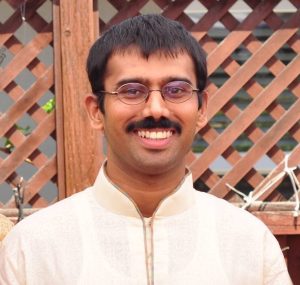
Dr Neeraj Kumbhakarna
Mechanical Engineering Department
Indian Institute of Technology
Bombay
India
Dr Neeraj Kumbhakarna earned his BEng in mechanical engineering from the Govt. College of Engineering, Aurangabad, before moving to the Indian Institute of Science to obtain his MEng. He then moved to Pennsylvania State University, where he carried out his PhD project whilst also working as a graduate research assistant. He has since moved to the Indian Institute of Technology, where he holds his current role as Associate Professor. Here, Dr Kumbhakarna’s work investigates exciting new organic compounds, looking into their thermal properties and their applications in various industries. He is also passionate about training the next generation of engineers and scientists, and won the Excellence in Teaching award from the Indian Institute of Technology Bombay.
CONTACT
E: neeraj_k@iitb.ac.in
W: https://iitb.irins.org/profile/155654
KEY COLLABORATORS
Dr S. Anand, Department of Mechanical Engineering, IIT Bombay
Professor Irishi Namboothiri, Department of Chemistry, IIT Bombay
Dr Sohan Lal, Department of Chemistry, IIT Bombay
FUNDING
Indian Space Research Organisation, Government of India
Industrial Research and Consultancy Center, IIT Bombay
FURTHER READING
A Sankaranarayanan, U Swami, R Sasidharakurup, A Chowdhury, N Kumbhakarna, Investigation of sooting flames by color-ratio pyrometry with a consumer-grade DSLR camera, Review of Scientific Instruments, 2021, 92, 044905.
A Sankaranarayanan, S Lal, R Sasidharakurup, I Namboothiri, A Chowdhury, N Kumbhakarna,
Droplet combustion studies on novel cage hydrocarbons using color-ratio pyrometry, Fuel, 2020 Volume 282, 118816.
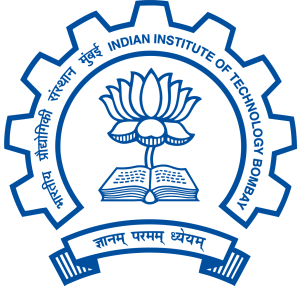
REPUBLISH OUR ARTICLES
We encourage all formats of sharing and republishing of our articles. Whether you want to host on your website, publication or blog, we welcome this. Find out more
Creative Commons Licence (CC BY 4.0)
This work is licensed under a Creative Commons Attribution 4.0 International License. 
What does this mean?
Share: You can copy and redistribute the material in any medium or format
Adapt: You can change, and build upon the material for any purpose, even commercially.
Credit: You must give appropriate credit, provide a link to the license, and indicate if changes were made.
SUBSCRIBE NOW
Follow Us
MORE ARTICLES YOU MAY LIKE
Dr Olalla Castro-Alvaredo | Measuring Entanglement: Symmetry-Resolved Entropy
Dr Olalla Castro-Alvaredo of the City University of London (UK) and her collaborators are advancing our understanding of an important phenomenon of quantum mechanical systems known as entanglement and, especially, its mathematical measures. Symmetry-resolved entanglement entropy is one such measure. Their study focuses on special quantum states which are excited with respect to a ground state. The research shows how the entanglement amongst quantum particles can be measured and assesses the contribution to the entanglement of quasiparticle excitations, particularly in the presence of additional symmetries.
Professor Martin Trefzer | Bridging Nature and Artificial Intelligence for Smart Electronics Technology
The ever-developing world of artificial intelligence (AI) stands at the tip of a transformative breakthrough. Professor Martin Trefzer from the University of York and Professor Jim Harkin from Ulster University have introduced a revolutionary approach to neural network design. They work on an electronic system based on AI that forms the basis of the cross-disciplinary project called Nervous Systems, which aims to build electronic neuromorphic devices with an artificial intelligence system mirroring the adaptability and responsiveness of biological neural systems.
Dr Jon Tore Lieng | Dynamically Installed Anchors for Floating Offshore Turbines
Effectively harnessing offshore wind presents a valuable opportunity to increase energy supplies. Floating wind turbines present several advantages over traditional fixed turbines in more shallow waters. Dr Jon Tore Lieng from Deep Sea Anchors and colleagues have developed a type of dynamically installed anchor to hold the structures in place while reducing both the costs and complexity associated with installation where cohesive seabed sediments are realised.
Dr Tsun-Kong Sham – Dr Jiatang Chen – Dr Zou Finfrock – Dr Zhiqiang Wang | X-Rays Shine Light on Fuel Cell Catalysts
Understanding the electronic behaviour of fuel cell catalysts can be difficult using standard experimental techniques, although this knowledge is critical to their fine-tuning and optimisation. Dr Jiatang Chen at the University of Western Ontario works with colleagues to use the cutting-edge valence-to-core X-ray emission spectroscopy method to determine the precise electronic effects of altering the amounts of platinum and nickel in platinum-nickel catalysts used in fuel cells. Their research demonstrates the potential application of this technique to analysing battery materials, catalysts, and even cancer drug molecules.

